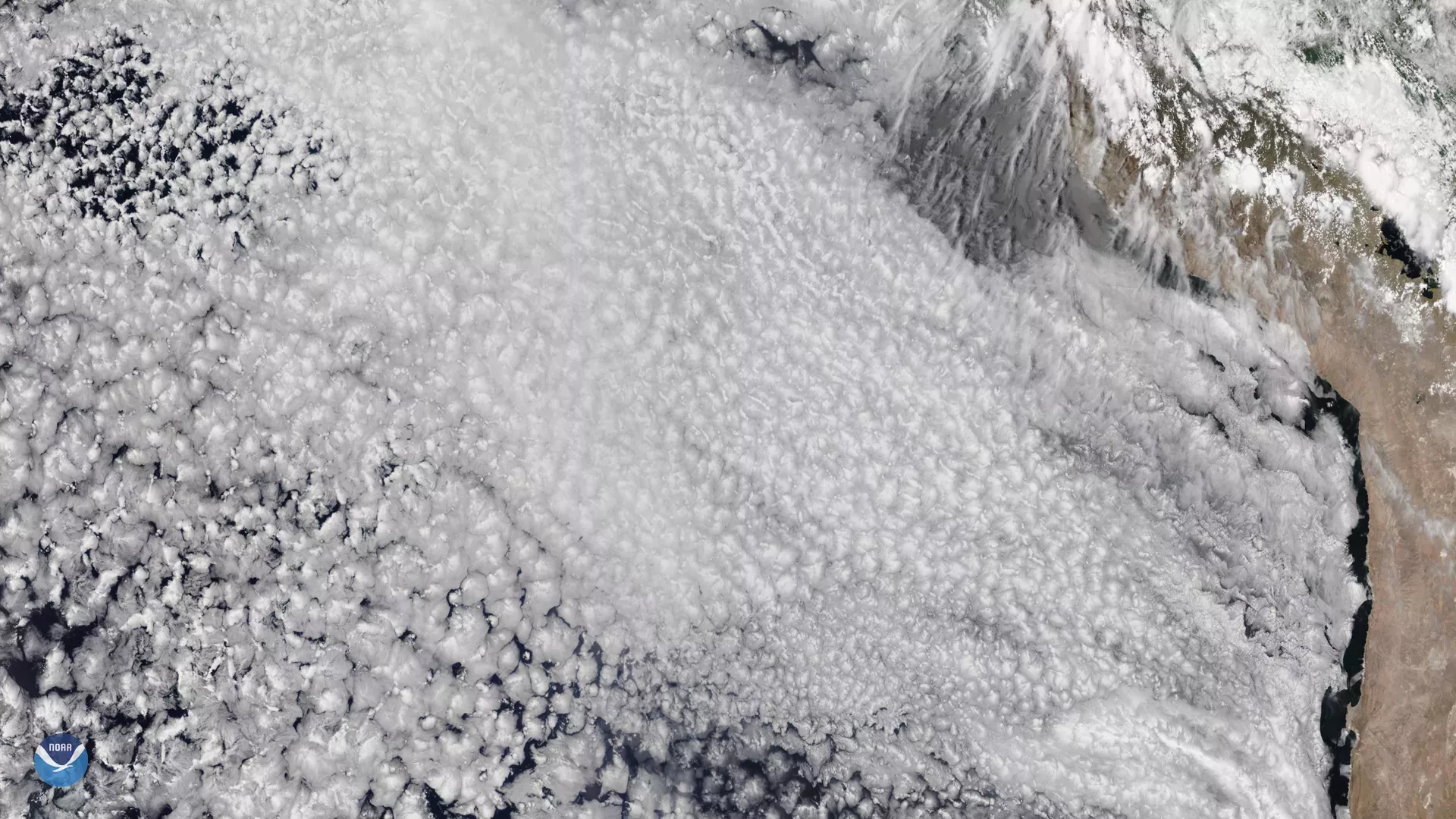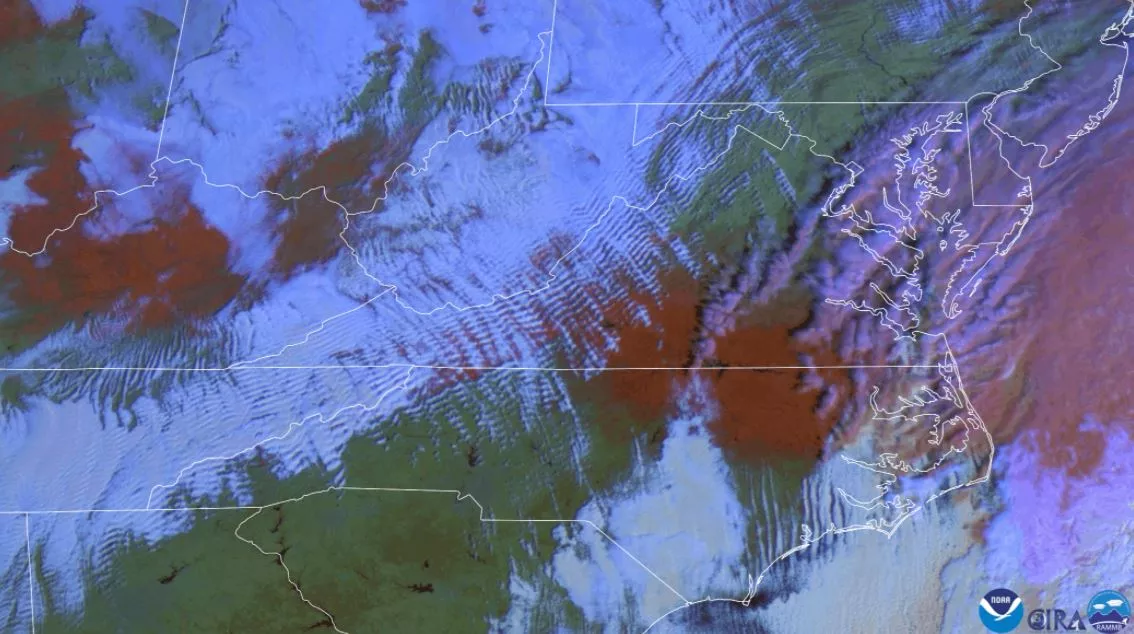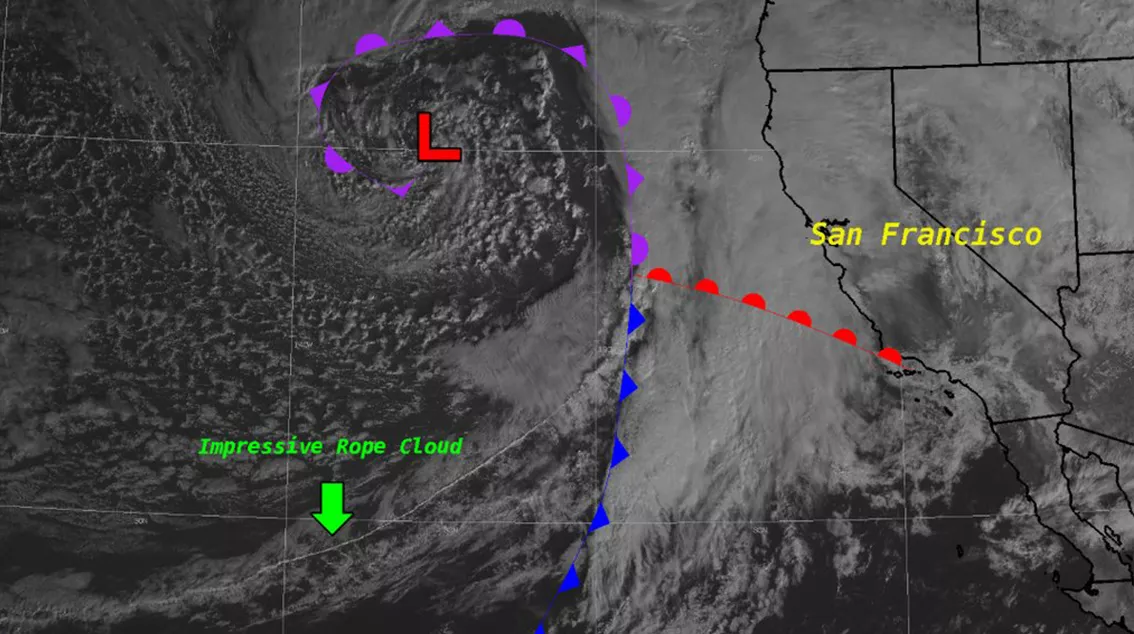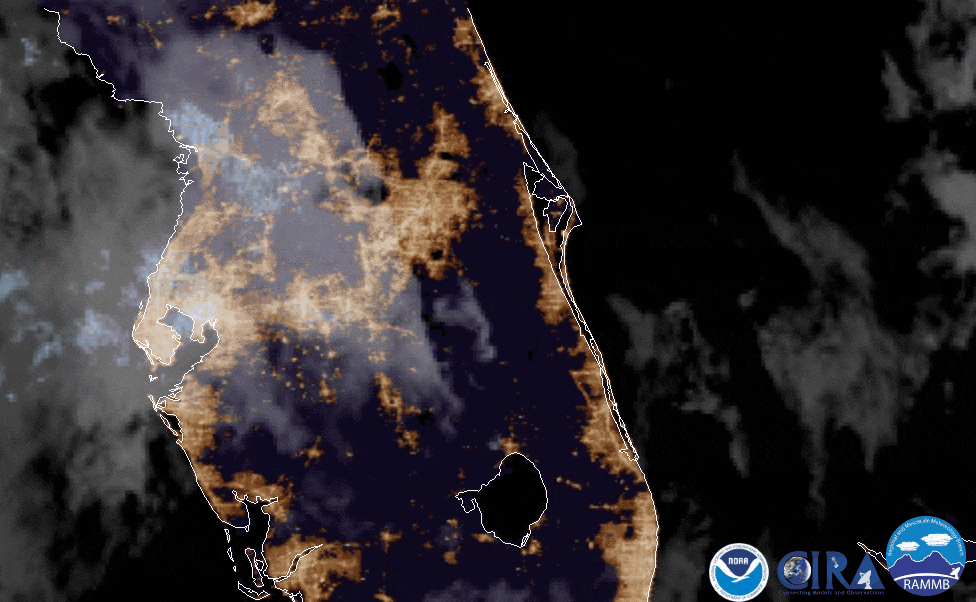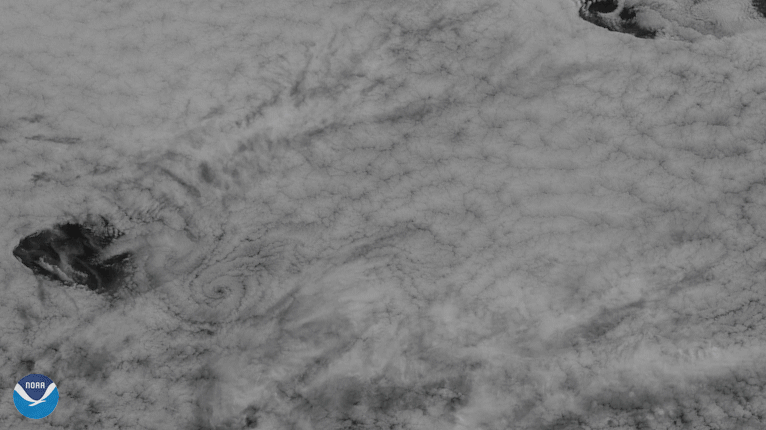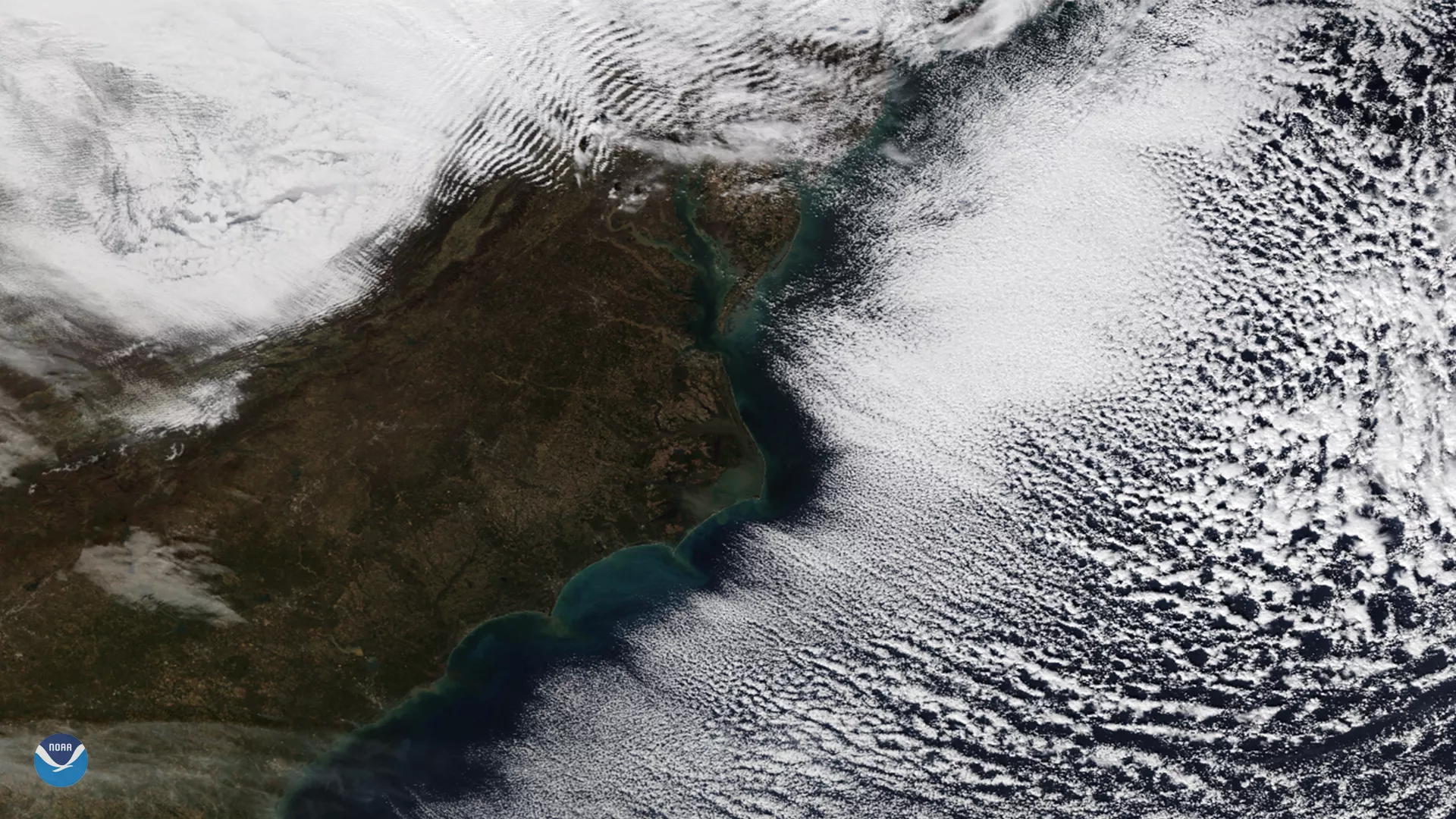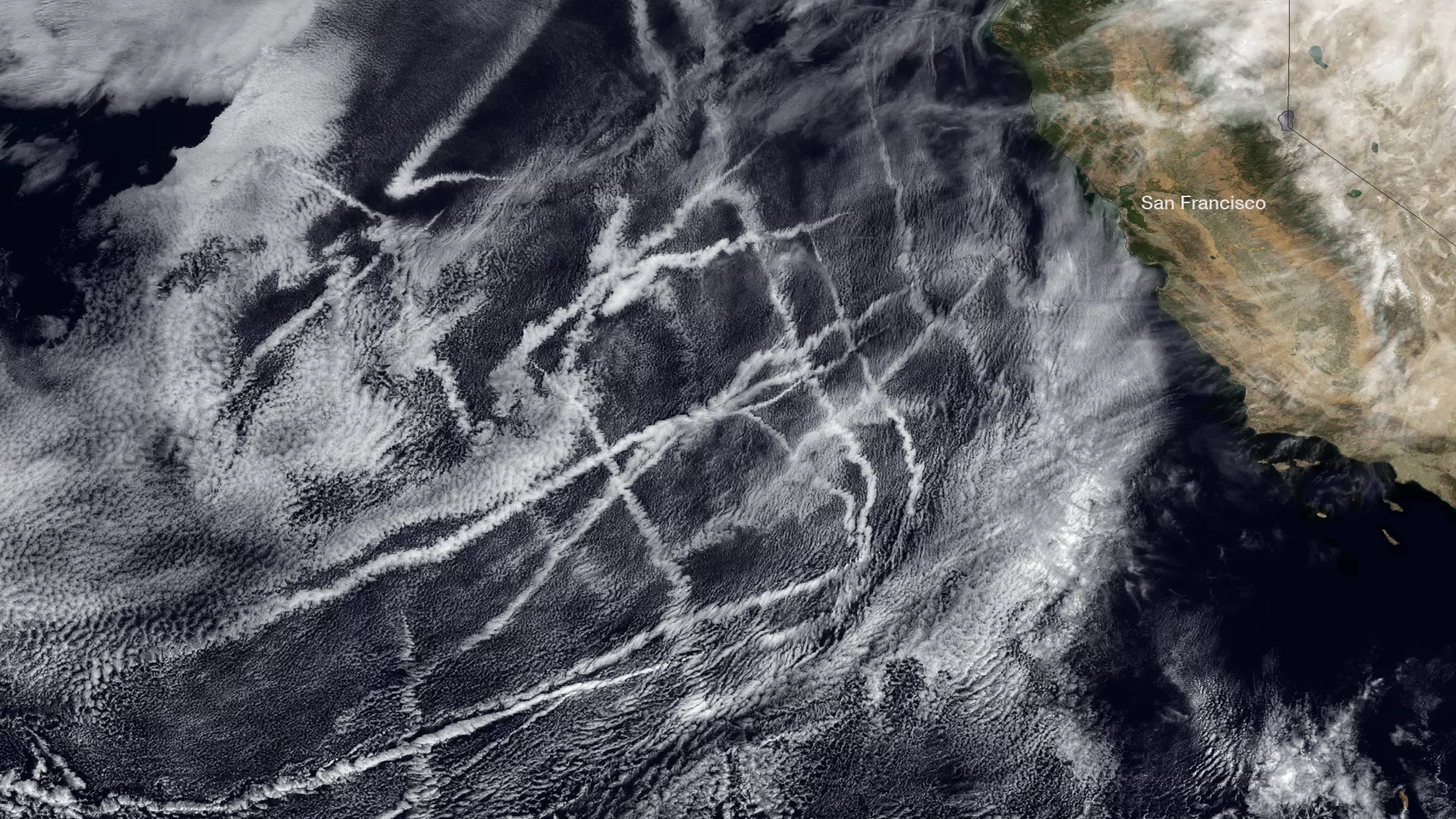Staring Down at the Clouds
Clouds form from water or ice that has evaporated from Earth’s surface, or from plants that give off water and oxygen as a product of photosynthesis. When it evaporates—that is, rises from Earth’s surface into the atmosphere—water is in the form of a gas, water vapor. Water vapor turns into clouds when it cools and condenses—that is, turns back into liquid water or ice. All clouds are made up of basically the same thing (water droplets or ice crystals that float in the sky) but all clouds look a bit different from one another.
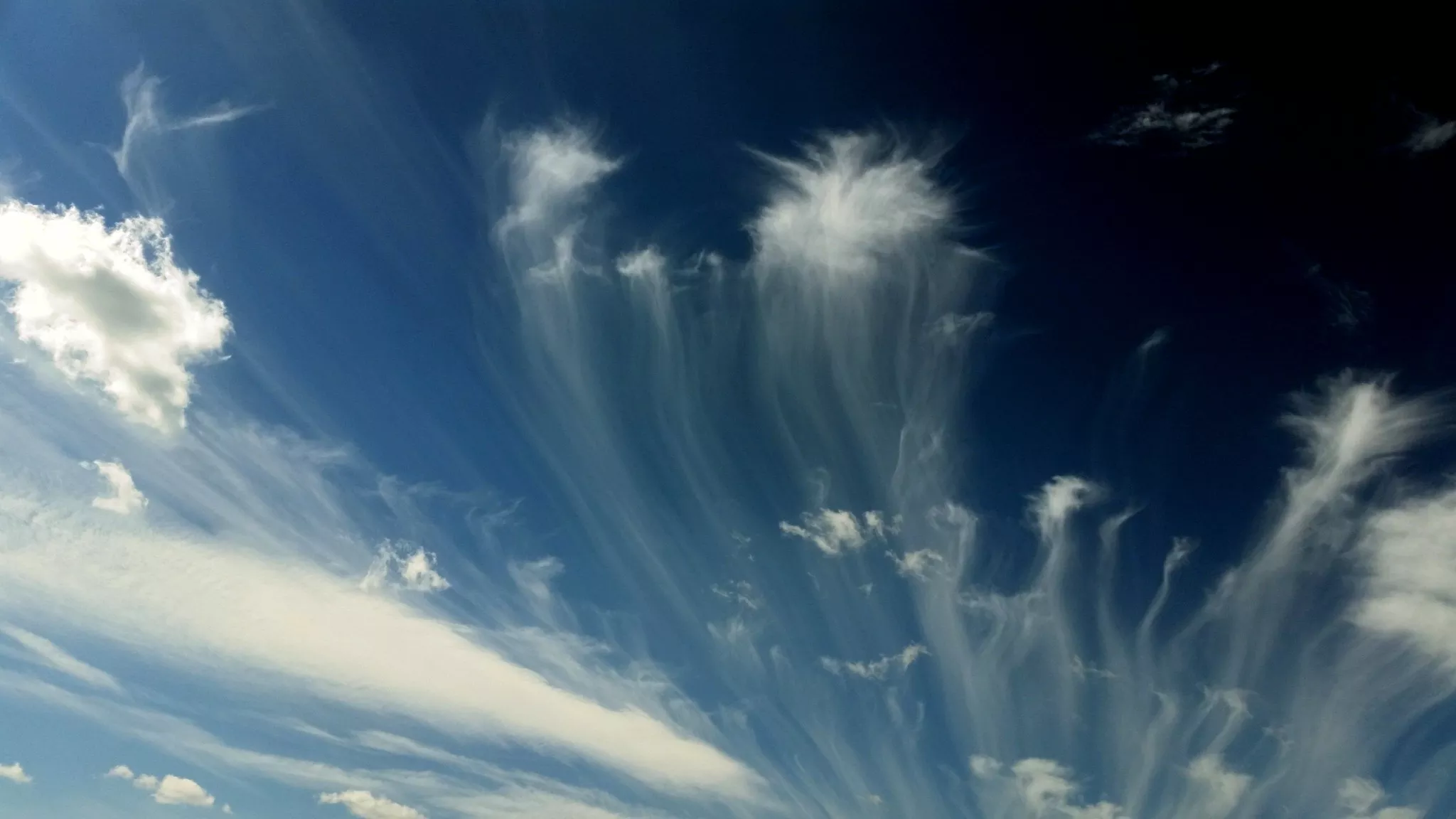
Common Cloud Types
More Articles on Clouds
-
Satellite Snapshots
The Himawari-9 satellite, captured imagery of polar mesospheric clouds—also known as noctilucent… -
Satellite Snapshots
NOAA’s GOES East satellite used its Advanced Baseline Imager to capture this mesmerizing GeoColor… -
Earth from Orbit
NOAA satellites are closely monitoring a strong atmospheric river that has been bringing excessive…

